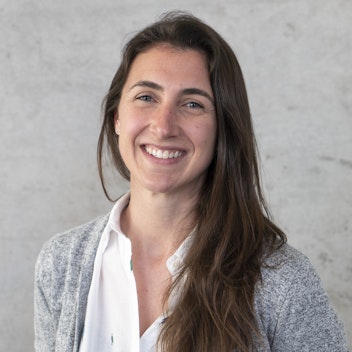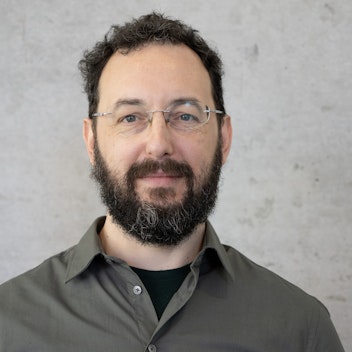magazine_ Article
The recipe for “lemon pai”
Or rather, the recipe for keeping a minority language such as Mòcheno alive
In order for a language not to die, it is necessary to recognize its dignity and protect its historical and cultural specificity, but above all and somewhat paradoxically, it is also necessary to open it up with confidence to external contamination so that it grows with the times. This is especially true for minority languages, and speakers of Mòcheno have known this for centuries.
The story goes that in the early 1900s, after having lived for many years in America, a lady returned to Palù, her home village in one of Trentino’s valleys. She had been a cook in California. Along with a few bits and bobs from her time there, the lady had brought home another treasure: a recipe for a cake with biscuit shell filled with lemon cream and topped with wisps of crisp meringue. It was a recipe for lemon pie. The lady baked it for a village festival, and everyone raved about it, so much so that before long the lemon pie, with its somewhat exotic taste, became the cake of choice for special occasions in Palù.
During this transition to becoming the village’s signature dessert, the lemon pie also underwent a linguistic transformation: it became one word and the “pie” became a “pai” so as to fit the spelling of the language spoken in Palù: Mòcheno.
Lemonpai was no longer just an imported delicacy; lemon pai had become Mòcheno.
Lemonpai was also a language survival strategy.
Between holding on and letting go
When the language you grow up with is spoken by little more than a thousand people, the temptation to let it go is strong. For Mòcheno, a language of Germanic origin spoken in the upper Fersina valley in Trentino, this is exactly what happened for a large part of the twentieth century. This was in part, because of fascist repression at the public level and partly because of practicality. When communicating with Italian-speaking neighbors in other municipalities, Mòcheno was practically “abandoned” – to the point that it almost disappeared.
“Codification is necessary to become aware of one’s heritage and to have the basic tools, but I always say: learn the rules and then at home, just speak! Speak as you want to!”
Lorenza Groff
Then, through the initiative of individual personalities, such as Don Giacomo Jakel Hofer, the pastor of Fierozzo/Vlarotz, who compiled the first Mòcheno dictionary by hand in the 1970s, and through the intervention of the Autonomous Province of Trento, something changed. In 1987, a first Cultural Institute was established, and since 2006 a law has governed the modalities for teaching the Mòcheno language in school.
Just political initiatives?
“The establishment of cultural centers really helps keep a language alive because it recognizes the dignity of a linguistic and cultural heritage. But this is not enough. First and foremost, the language must live, it must be used every day,” points out Lorenza Groff, staff member of the Mòcheno Cultural Institute, Bersntoler Kulturinstitut.
True words, because when the language you grow up with is spoken by so few people daily, the temptation to stubbornly stick to entrenched norms and archaic linguistic usages can be strong. When, in the early 2000s, the process of normalization of Mòcheno grammar and the writing system began, great attention was paid to accents and rules for sentence construction. Intense discussions took place in the town halls and university classrooms where these workshops were being held. Sometimes, the higher aim of codifying the language risked being lost in discussions over the details. In the end, a single codification for the three variants of Mòcheno was made: one for each of the three main villages where the language originated in the 13th century – Palù/Palai, Fierozzo/Vlarotz and Frassilongo/Garait.
“Codification is necessary to become aware of one’s heritage and to have the basic tools, but I always say: learn the rules and then at home, just speak! Speak as you want to!” continues Groff, who learned Mòcheno as an adult, thanks to a colleague whose enthusiasm inspired her. “Every family can have its own way; the important thing is that we speak. Even if the introduction of new words taken from Italian, English or another variant of German is a price to pay to keep our language alive.”
An example: to thank you for a message received via Whatsapp Groff will say in her Mòcheno: “gèltsgott ver en messaggio”. The first word is a contraction of the ancient expression Vergelte es Gott, a widespread saying that is used in southern German-speaking regions and which means “may the Lord reward you”. The second part is a modern borrowing from Italian.
“All languages evolve, meet, and influence each other,” interjects Sabrina Colombo, a linguist at Eurac Research who has been involved in the teaching of multilingualism for years. “Even if a minority language needs more protection and attention, it still remains a language and behaves as any other one.”
Dignity for all languages
How many languages does the average person speak? They can be counted on the fingers of one hand. How many languages would the average person be able to list? Perhaps about 50. In fact, there are about 7,000 languages that have been surveyed in the world and the vast majority of these are languages spoken by minority communities, such as Mòcheno, Aleut (Alaska), Irish Gaelic, or Arbëreshë.
“Even if just a few people speak it, that language still has value.”
Sabrina Colombo
“Languages represent a culture and a set of values, and if they are not spoken, for example in school, it is difficult for people to recognize the treasure they carry,” Colombo argues. “The number of speakers should have no bearing on justifying convenience over protecting a language. Even if just a few people speak it, that language still has value. And recognizing and encouraging contamination between multiple languages is certainly enriching.”
“I strongly believe in the collective value of a language,” Lorenza Groff echoes. “My mentor, Leo Toller (historian of the Bersntoler Kulturinstitut) used to speak to me in Mòcheno and tell me ‘Just answer as you feel like’. So, I learned by listening, mixing words, getting closer to things and in doing so, made this ancient knowledge my own. Now I speak to my daughter in Mòcheno. I really hope that in the future all languages will be recognized with the same dignity.”
Workshops for schools in South Tyrol
In the spring of 2023, Eurac Research’s Institute for Applied Linguistics and the Mòcheno Cultural Institute (Bersntoler Kulturinstitut) designed and organized workshops for middle and high schools. For 90 minutes, classes played a giant board game, with questions about Mòcheno and other world languages, and tested their linguistic intuition with interactive activities.
Everyone who participated was enthusiastic and the workshop organizers are planning to repeat the activities.
For information about the workshops and to download educational materials on multilingualism, visit the SMS project page.







